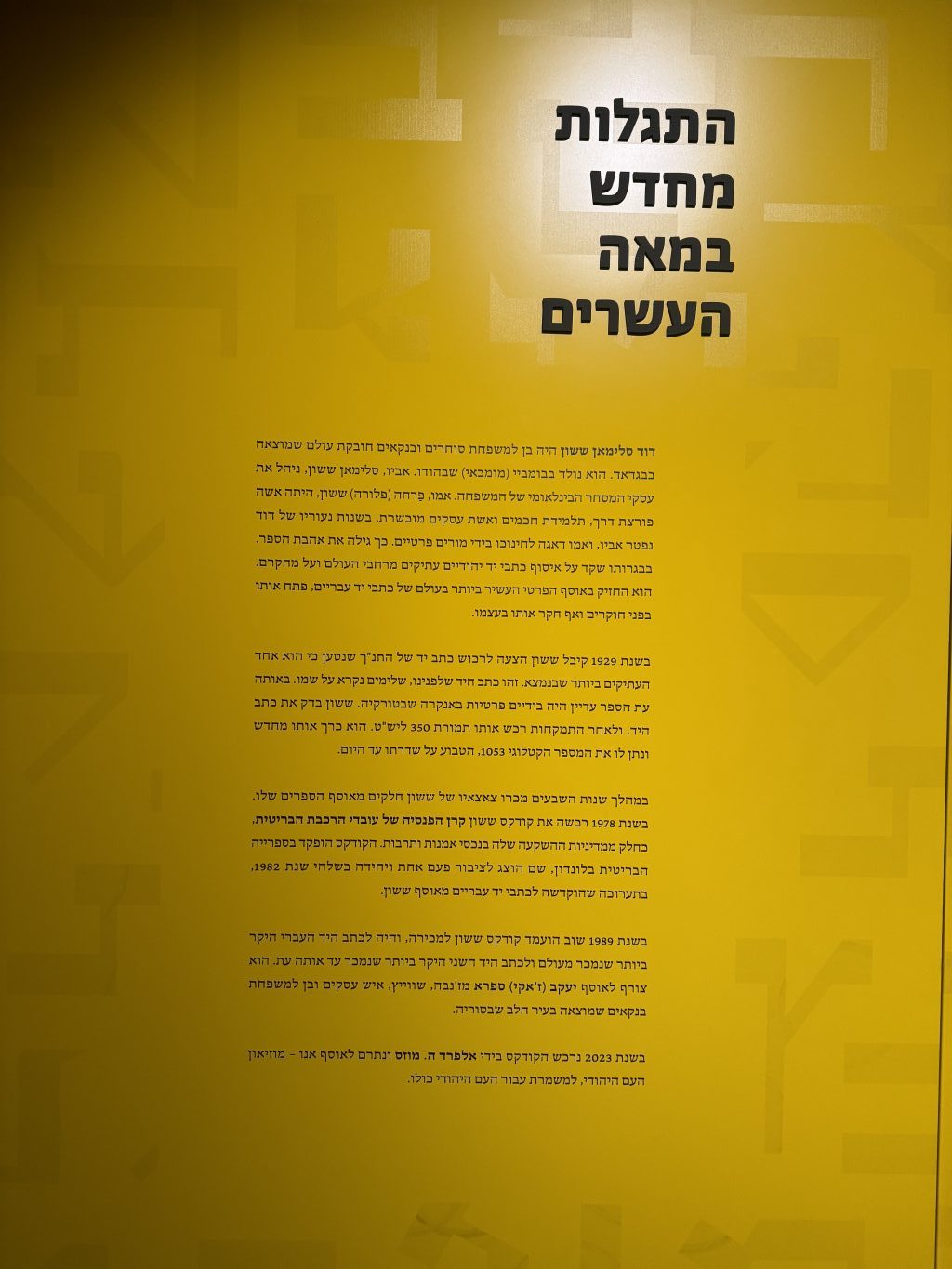Text Panel
David Solomon Sassoon was an heir to a Baghdadi family of merchants and bankers that
spanned the globe. He was born in Bombay (Mumbai), India. His father, Solomon Sassoon,
ran the family’s international trading firm. His mother, Farha (Flora) Sassoon, was a
trailblazing woman, a Torah scholar, and a skilled businesswoman. When David was still
young, his father died, and his mother took charge of his education by hiring private tutors.
It was then that he discovered his love of books. As an adult, David devoted himself to
collecting and studying ancient Jewish manuscripts from around the world. He held the most
valuable private collection of Hebrew manuscripts, which he made available to scholars and
even studied himself.
In 1929, David Sassoon received an offer to purchase a Tanakh manuscript that, it was
claimed, is among the oldest known. That manuscript sits before you now; it would
ultimately be called by Sassoon’s name, but at the time it was still in private hands in Ankara,
Turkey. Sassoon inspected the manuscript and, after some bargaining, bought it for £350. He
had it rebound and assigned it the shelf mark 1053, which is still stamped on its spine. After
further examination, Sassoon averred that the codex was written in the 10 th century CE.
During the 1970s, Sassoon’s descendants sold off part of his collection. In 1978, the British
Rail Pension Fund bought Codex Sassoon as part of its strategy of investment in artistic and
cultural assets. The codex was deposited with the British Library in London, where it was
displayed publicly only once, in late 1982, at an exhibition devoted to Hebrew manuscripts
from the Sassoon Collection.
In 1989, the codex was once again put up for sale, and it achieved the highest price ever for
a Hebrew manuscript – the second highest price for any manuscript at the time. It became
part of the collection of Jacob (Jacqui) Safra of Geneva, Switzerland, a businessman and
investor from a banking family that originated in Aleppo, Syria.
In 2023, the codex was acquired by Ambassador Alfred H. Moses and donated to the
collection of ANU – The Museum of the Jewish People, to safeguard it for the entire Jewish
people.

